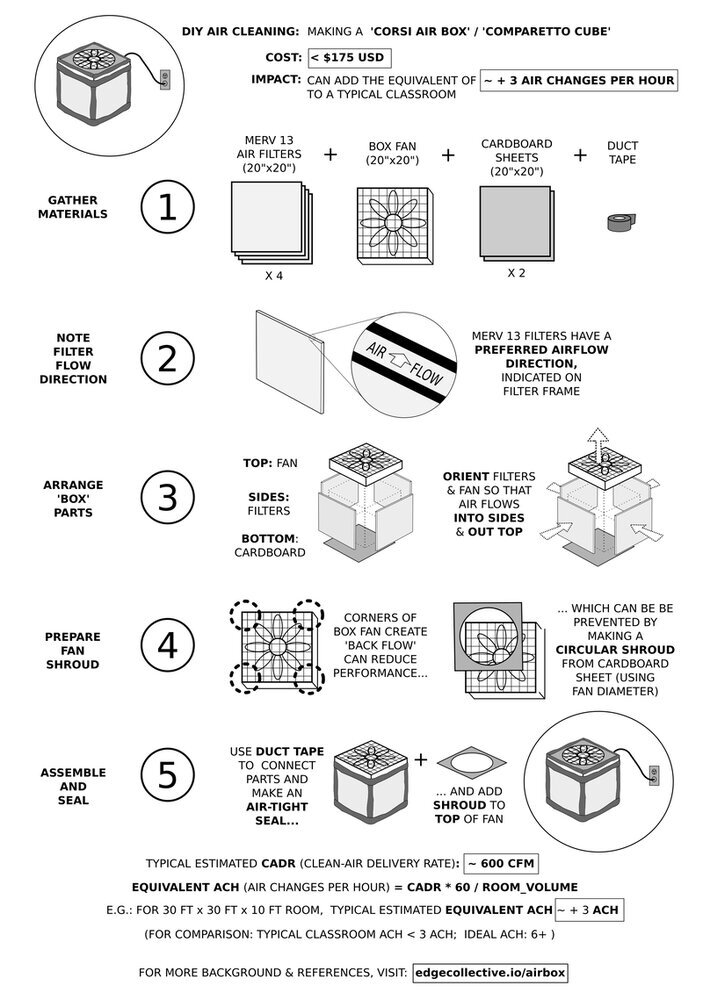David Baxter PhD
Late Founder
Why an explosion of pollen is driving allergies bonkers this spring
By Christy Climenhaga, CBC NewsJune 10, 2022
"Spruce trees ... are just loaded like Christmas trees with all of these cones"

Pollen is being released in huge quantities across Western Canada, such as this floating cloud photographed in Regina. (Kirk Fraser/CBC)
If you're a seasonal allergy sufferer, you may have been reaching for the Reactine a little more than usual this year.
Pollen has appeared in clouds across much of Western Canada, piling up on cars, decks, driveways and even beaches.
"It's ridiculous. I haven't seen it like this in forever," says Saige Liimatainen, who is suffering intense allergy symptoms this year where she lives near Prince George, B.C.
"I'm sitting in my car right now and I'm looking at a nice layer of pollen on my mirror. And it's pretty bad. My allergies are pretty awful."

High pollen counts, being driven in part by last year's heat dome, are causing drifts to form on beaches such as this one at West Lake near Prince George, B.C. (Saige Liimatainen)
How bad is it?
Pollen counts have been high across much of Western Canada, according to Daniel Coates, director of Aerobiology Research Laboratories in Ontario.The Ottawa lab monitors pollen and spores across Canada to provide data and forecasting for a number of trees, including oak, birch, and pine.
"Right now, pine is actually increasing in Edmonton and it's been doing that for a little while," says Coates.
In Saskatchewan, both Saskatoon and Regina have experienced high rates of pollen this spring.
"For pine pollen this year in Saskatoon, it's similar to last year. We've had a couple of days close to 500 grains per cubic metre, which is very high," he says.
According to Coates, pine in Regina is worse than last year and has lasted from late May until now.
The root of this floating nuisance is coming from the branches of the coniferous trees. The flowering display on our trees is breathtaking — by many definitions, says Janice Cooke, a biological science professor at the University of Alberta.
"The spruce trees in our urban neighbourhoods are just loaded like Christmas trees with all of these cones," she says.
"Every so often we get a confluence of developmental circumstances and meteorological circumstances. Everything aligns and we get great flowering and we call that masting."
This is the first time in a few years that we've experienced this, she says.
Heat is a driving factor
Cooke says that a tree's pollen development operates on a delay. That means this year's flowering is determined by last year's weather."We had a drought and we also had an extreme heat event last summer. Both those things are really tough on plants," says Helen Shook, a research technician who runs GardenLine, a free help service offered by the University of Saskatchewan.
She says that sometimes a tree's response to those conditions is to go into overdrive where reproduction is concerned.
"That's triggering all kinds of things inside the plant. And one of those things is a survival mechanism. So, we've got to make babies, we've got to make seeds."
Cooke says our cooler spring has also affected the release of pollen. She says overnight frosts and cooler daytime temperatures delayed the pollen shedding.
"They're all shedding at the same time. And this is why we're seeing this crazy amount of pollen in the air this year," says Cooke.

While the excess cones will not damage the trees, it can affect growth. (Kirk Fraser/CBC)
Is climate change to blame?
The answer to that question is a little complicated, according to Cooke. That's because many of these trees only produce large cone crops every so often because it takes a lot of resources."Even under conditions of climate change, where we would maybe see those warm summer temperature heat domes more frequently, they won't always correspond to these massive crops," she says.
And though stress on the trees and high cone production can affect growth, Cooke says it isn't harmful for the trees to create this much pollen.
"It does put them into a little bit of a deficit going into the season. But this season so far has been really conducive to tree growth," she says.
Allergy sufferers are feeling the impacts
Of course, the other thing that is growing is the irritation of people who suffer seasonal allergies.Dr. Ross Chang, an allergy specialist in Burnaby, B.C., says patients seem to be experiencing more severe symptoms this season over last.
"Allergies are an overreaction of the immune system. We call it hyperreactivity," says Chang, who was the past president of the B.C. Society of Allergy and Immunology. "And in certain individuals, otherwise innocuous things like pollen, dust, pets or foods can trigger both moderate or severe allergic reactions."
Chang says anything from itchy, watery eyes and a runny nose to breathing difficulties like asthma can all be triggered by pollen counts like what we've been seeing.

Pollen coming off of Hudson's Bay Mountain in Smithers, B.C. (Submitted by Jim Oud)
According to Chang, around 20 per cent of people in Canada suffer from some sort of airborne seasonal allergy.
"The most important thing is that to let people know that there is help for people with allergies, you don't have to suffer through it," he says "There's a lot of methods we can do to help you enjoy your spring and summer activities."
At the Ottawa pollen lab, Coates concurs that when counts are up there are little things you can do that help.
"Go for a walk after it rains because rain washes out the pollen from the air," he says.
Even masking up, wraparound sunglasses or keeping pets off furniture on bad pollen days can save you from symptoms, according to Coates.
On really bad days, drastic measures might apply, he adds.
"Just stay indoors."


